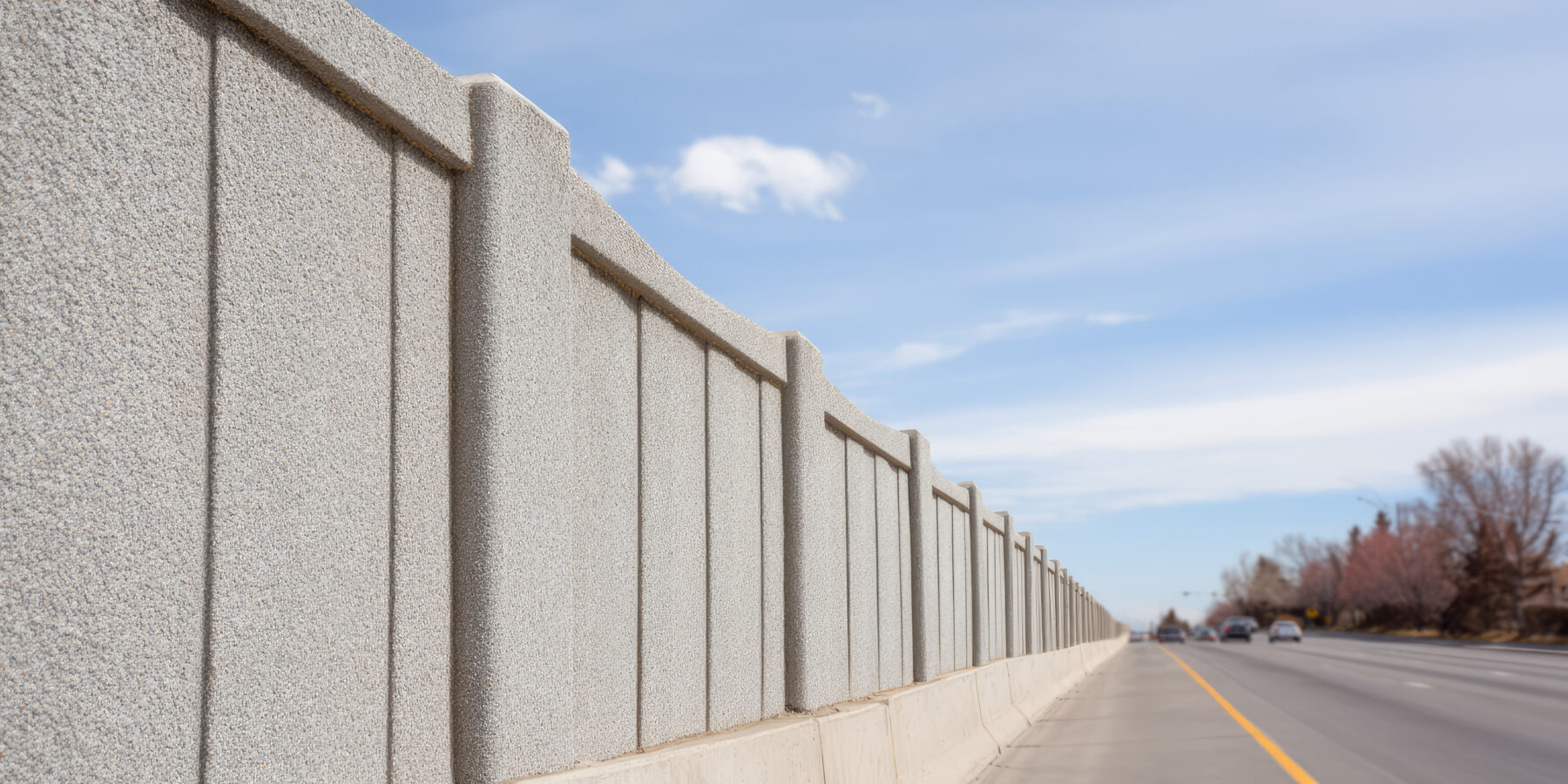How Concrete Sound Barriers Work to Reduce Noise Pollution
June 10, 2025

Highway traffic delivers a steady stream of noise that quickly defines the space that it occupies. Pulsating engines, sharp braking, and the friction of tires on asphalt, all work together to create a distinct soundscape. In developed areas near major roads, that level of noise becomes routine. However, the strategic placement of concrete barriers not only interrupts the noise, but it also works to reshape the environment entirely.
The Science Behind the Concrete Barriers
Sound travels in waves, bouncing off surfaces or bending around them. When vehicles pass along a highway, those waves spread outward until something interrupts them. That’s where concrete sound barriers find their ideal use. These walls block the direct path of sound, forcing it to reflect or scatter, reducing the amount that reaches beyond the barrier.
Concrete delivers performance where lighter materials tend to struggle. Its density is certainly a structural asset, but it’s also a functional barrier. Sound doesn’t pass through concrete easily, which is exactly the point. Instead of absorbing a portion and allowing the rest to escape, concrete intercepts and disperses sound. Surface texture adds another layer of control, redirecting energy rather than reflecting it straight back. The impact is measurable: fewer decibels, less intrusion, and a noticeable improvement in the surrounding environment.
Design Always Matters
There’s a method to the placement and height of every barrier. For a wall to be effective, it must have the right height and length that enable it to block the line of sight between the source of the noise and the communities that it’s meant to protect. Sound rarely travels in a straight line, as it bends and bounces, adapting to its surroundings. That’s precisely why engineers must consider the flow of traffic, and how terrain, wind patterns, and nearby structures influence acoustics.
In some cases, the barrier may include absorptive elements to further trap sound, especially in areas with multiple reflective surfaces. Concrete panels can be formed with ribbed or grooved surfaces, and some even include inserts made of other materials to further reduce acoustic rebounding.
These choices display a concern with utility, durability, and maintenance. Thankfully, concrete is low-maintenance, resistant to weathering, and resilient enough to last for decades with minimal upkeep. That makes it a cost-effective choice for long-term infrastructure projects where performance is necessary.
From Mix Design to Finished Barrier: The Construction Process
A high-performing concrete sound barrier starts with the mix. Engineered for both structural strength and acoustic control, every component is selected with intent. Aggregates, admixtures, and proportions are tailored to meet strict performance standards. Ready-mix producers and engineers work in sync to align the formulation with project demands. Nothing is incidental—every detail in the mix supports long-term function and form.
The shape of a concrete sound barrier is driven by site demands and design precision. Cast-in-place methods use reinforcing steel and measured lifts to ensure strength from base to top. Slip-form construction offers a seamless, continuous pour but demands tight coordination. The mix must hold form immediately, leaving little margin for error. Success depends on alignment between mix design, method, and execution.
Precast panels represent a third option, manufactured off-site under controlled conditions before transportation and assembly. These panels require mix designs that facilitate efficient production schedules while maintaining long-term durability. Surface textures—whether ribbed, fluted, or fractured—are created during casting through specialized form liners or finishing techniques.
Temperature control during placement and curing proves critical for acoustic barriers. Weather conditions influence mix design decisions, delivery scheduling, and curing methods. Proper curing ensures the concrete develops its intended properties, including the density necessary for optimal sound attenuation.
Throughout the construction process, quality control measures verify that the concrete meets project specifications. From initial mixing through final curing, each step requires attention to detail and technical expertise—exactly the kind of knowledge ready-mix suppliers bring to these specialized projects.
The Community Impact Is Tangible
The benefits of sound barriers extend beyond engineering metrics, where lowering ambient noise improves quality of life. In residential neighborhoods, reduced noise can help residents support quality sleep, reduce distractions, which aid in stress reduction. In schools that exist near highways, quieter surroundings improve learning conditions. Furthermore, in healthcare settings, noise reduction results in better recovery.
Commercial properties benefit too. Restaurants with patios or businesses with outdoor seating gain more usable space when noise levels are controlled. By making nearby areas more livable and welcoming, sound barriers can even help preserve property values and contribute to community growth.
Long Term Solutions Built to Last
While other materials can be used in barrier design, like wood, metal, or even recycled composites, concrete remains a top performer for a reason. Its extended service life, structural reliability, and high acoustic performance make it the backbone of many municipal and state noise abatement strategies.
As urban development continues to press against major transportation corridors, demand for effective sound control solutions continues to rise. Concrete sound barriers answer that call with simplicity and strength.
Shaping a Quieter Future
Reducing noise pollution means delivering advanced infrastructure and planning to the communities that surround busy roads. Concrete sound barriers represent a practical, proven step toward that goal. They reshape how sound moves through the environment, creating pockets of calm in places that would otherwise be overwhelmed by noise. For developers, city planners, and transportation agencies, they offer a tool with measurable results and enduring value.
For those interested in integrating sound control into a project or property plan, reach out to an expert in high-performance concrete materials. They are sure to reframe sensitive spaces to keep noise at bay.
